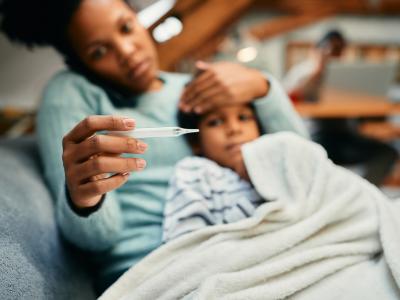Humans transmit SARS-CoV-2 to their pets, household study finds
Among a sample of 107 households with pets and at least one COVID-19–infected adult in Idaho and Washington state, 21% of dogs and 39% of cats had signs of infection, 40% of dogs and 43% of cats had SARS-CoV-2 antibodies, and 5% and 8%, respectively, tested positive on polymerase chain reaction (PCR) testing, finds a new study in Emerging Infectious Diseases.
University of Washington researchers led the study of households with a total of 119 dogs and 57 cats. Households were recruited through COVID-19 clinical trials and community studies, social media, word of mouth, community partners, and contact tracers. The team surveyed a member of each household, reviewed COVID-19 test results, and, when possible, visited the home to collect pet blood and nose-throat and fecal swabs.
At least 6 weeks, on average, elapsed between the last human COVID-19 diagnosis and the collection of samples. Among the 119 dogs and 57 cats whose households completed surveys, 20.4% and 38.8%, respectively, had signs of COVID-19.
Of the 94 dogs and 39 cats tested using PCR, 5.3% and 7.7%, respectively, were positive for COVID-19, and of the 81 dogs and 32 cats with serum samples, 40.2% and 40.6% had detectable SARS-CoV-2 antibodies.
Five of 94 dogs and 3 of 39 cats had positive nose-throat swabs on PCR, and one dog's fecal swab was also positive. Of the 5 positive PCR samples (2 dogs and 3 cats) that had enough virus for whole-genome sequencing, the earliest cat sample (collected in April 2021) was of the Pango clade B.1.2, while the rest of were the Delta strain.
Three of the five dogs that tested positive before having detectable SARS-CoV-2 antibodies, and two were PCR positive and seropositive at the same time. Eighty-six percent of dogs and 100% of cats were allowed on furniture, 75% and 68%, respectively, received kisses from household members, and 69% and 73% shared their beds.
"Our study contributes useful and novel findings to the literature on cross-species transmission of SARS-CoV-2, with relevance to other zoonoses transmitted in a household setting," the researchers wrote.
Oct 26 Emerg Infect Dis study
Those who buy into COVID-19 hoaxes may be prone to other conspiracies
A new study in PLoS One conducted by Ohio State and University of Kent researchers suggests that people who believe in COVID-19 conspiracy theories are at a greater risk of believing in other conspiracies.
The authors of the study said believing COVID-19 was a "hoax" was a gateway to other conspiracies, including the belief that Donald Trump won the 2020 US presidential election.
The study was based on results from two surveys given to participants; the first to 501 US adults in June 2020, and the second survey in December of 2020, when 107 of the previous participants were asked the same questions, which included ranking on a 5-point scale ranging from "definitely not true" to "definitely true" statements, such as "Some UFO sightings and rumors are planned or staged in order to distract the public from real alien contact" and "New and advanced technology which would harm current industry is being suppressed."
Both surveys began by asking participants their belief in conspiracy theories about the origin and severity of COVID-19. Those who showed skepticism about COVID-19 believed in more conspiracies 6 months later, and those who identified the virus as a hoax were significantly more likely to believe in other non-COVID conspiracies.
The authors also referenced large UK-based conspiracy study, which showed a belief in COVID-19 conspiracies was directly linked with belief in other conspiracies.
"People tend to go down the rabbit hole after something happens in their life that triggers general interest in conspiracy theories," said first author Javier Granados Samayoa, PhD, in an Ohio State University press release. "With COVID-19, there was this large event that people could not control, so how could they make sense of it? One way is by adhering to conspiracy theories."
Oct 26 PLOS One study
Oct 26 Ohio State press release
Global COVID cases and deaths continue overall decline
Last week, COVID cases continued to decline, with cases down in some regions and stabilizing in others, including the Western Pacific, where infection levels have been on the rise, the World Health Organization (WHO) said yesterday in its latest weekly update.
Cases dropped 15% last week compared to the previous week, and deaths decreased by 13% over the same period. For fatalities, WHO reported declines for four regions, stabilization in the Americas, and an increase in the Eastern Mediterranean region.
Of more than 2.6 million cases reported to the WHO last week, the five countries reporting the most—though all with declining cases—include Germany, France, China, the United States, and Italy.
The WHO said the Omicron BA.5 lineages make up 77.1% of cases, followed by BA.4 lineages, and then B.2 lineages, which have risen in prevalence. It said genetic diversification of SARS-CoV-2 continues, with 390 Omicron sublineages reported so far, along with 48 recombinants.
As of Oct 25, 35 countries have reported the XBB and XBB.1 variants, and 65 have reported BQ.1—a BA.5 subvariant—and its descendant lineages.
The WHO said its virus evolution technical group met on Oct 24 to discuss XBB and BQ.1, with a statement on its assessment to come.
Oct 26 WHO COVID situation report











